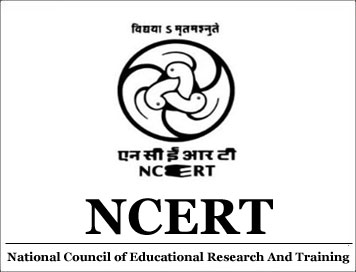(Download) NCERT Revised syllabus Of Maths (Class 1 to 5 )
Disclaimer: This website is NOT associated with CBSE, for official website of CBSE visit - www.cbse.gov.in
(Download) NCERT Revised syllabus Of Maths (Class 1 to 5 )
General Points for Textbook Writers
1. The following syllabus has been developed keeping the philosophy of the Yashpal Report and the National Focus Group for Teaching Learning Mathematics in view. Keeping in mind the reality of the number of hours that teaching actually takes place in the school, e have kept a thumb rule of 140 periods, of 30-40 minutes each, per year for mathematics. Within this the number of periods allotted to each area is given in the syllabus. However, this is just to give an approximate idea of the weightage to be given to a particular topic by writers and others who are transacting the syllabus. This breakup of time should not be taken as an exact writ by teachers.
2. We need to encourage the development of a culture of learning outside the classroom. If a topic is linked well with experiences, interesting exercises given then conceptual learning of math would continue beyond the 140 periods.
3. The syllabus has been developed in five very natural streams flowing from Class I to Class V, which overlap very often, not only with each other but also with themes developed in other subjects that are being learnt simultaneously.
4. While developing the study material, we expect the focus to be activities/exercises, built around children’s real-life experiences and from areas across the curriculum. They need to be created in a manner that would meet more than one objective simultaneously, and cover more than one stream at the same time. Further, we must include extensions to activities as part of the main course material, and not as a supplement, for the learners who feel encouraged to do them. However, as for any activity or experience, the teachers would need to give enough leeway to children, or modify the activity, to suit their interests. In this context, it is important that children’s current local interests and enthusiasms be utilised to the maximum as opportunities for developing math concepts. Enough space, in various ways, must be given for this in the textbooks.
5. Mathematics is about a certain way of thinking and reasoning. This should be reflected in the way the materials are written and other activities and exercises created. The teachers’ training should reflect this also. Particular stress must be given to allow the child to articulate her reasons behind doing an exercise in a certain way, for example, why she is continuing a pattern in a particular way. Such interactive learning will require the teacher to plan for more time to be given for certain concepts in the classroom, and the textbooks would need to allow for this.
6. The Class I and II books would be workbooks with short notes for the teacher about suggestions for dealing with the particular topic. (In fact, such notes should probably be incorporated in all the primary books.) The Class I workbook and the other materials would be created with the view to consolidate the mathematical concepts and experiences that the child already has before she joins school, and to build on this background.
7. The language used in the books for Classes III to V should be what the child would normally use and would understand.
8. The sequencing of the concepts should not be linear, but spiral.
9. The book should not appear to be dry and should be attractive to children in various ways. The points that may influence this include the language, the nature of descriptions and examples, inclusion or lack of illustrations, inclusion of comic strips or cartoons to illustrate a point, inclusion of stories and other interesting texts for children.
10. While dealing with problems, the text books should have several situations with multiple correct solutions. Make the children aware that there can be several strategies for teaching a problem.
11. The material regarding patterns should be created in a way that would allow the child to observe patterns to generalise them, and to develop her own patterns.
12. The purpose is not that the children would learn known definitions and therefore never should we begin by definitions and explanations. Concepts and ideas generally should be arrived at from observing patterns, exploring them and then trying to define them in their own words. There should be no overt emphasis on remembering definitions in known standard forms in exactly the same words.
13. Problem posing is an important part of doing maths. Exercises that require children to formulate and create a variety of problems for their peers and others should be built
CLASS-WISE COURSE STRUCTURE
Class I |
Class II |
Geometry (10 hrs.)SHAPES & SPATIAL UNDERSTANDING
SOLIDS AROUND US
Numbers (46 hrs.)DEVELOPING A SENSE OF NUMBERNESS,COUNTING AND OPERATIONS OF NUMBERS 1 - 9 AND ZERO
– Matching and |
Geometry (13 hrs.)SHAPES & SPATIAL UNDERSTANDING3-D and 2-D Shapes
Numbers(46 hrs.)
|
